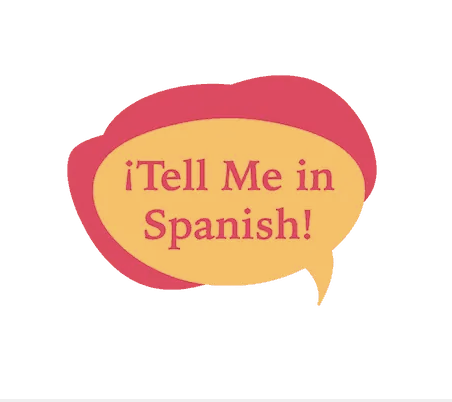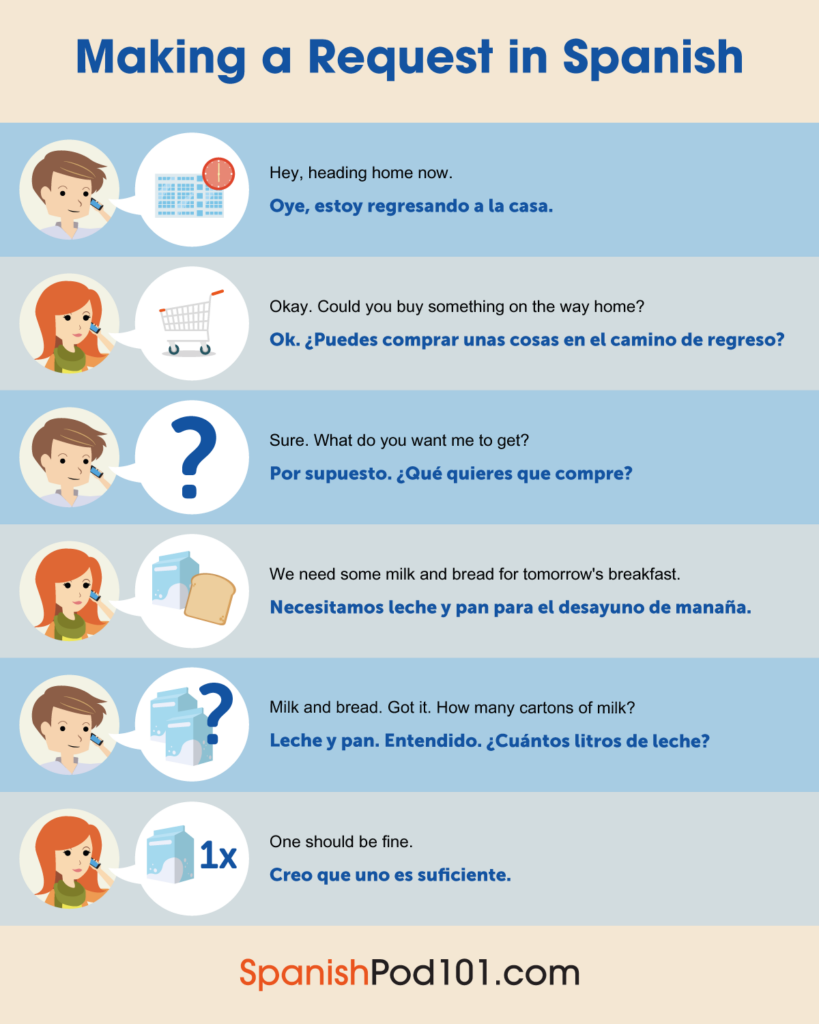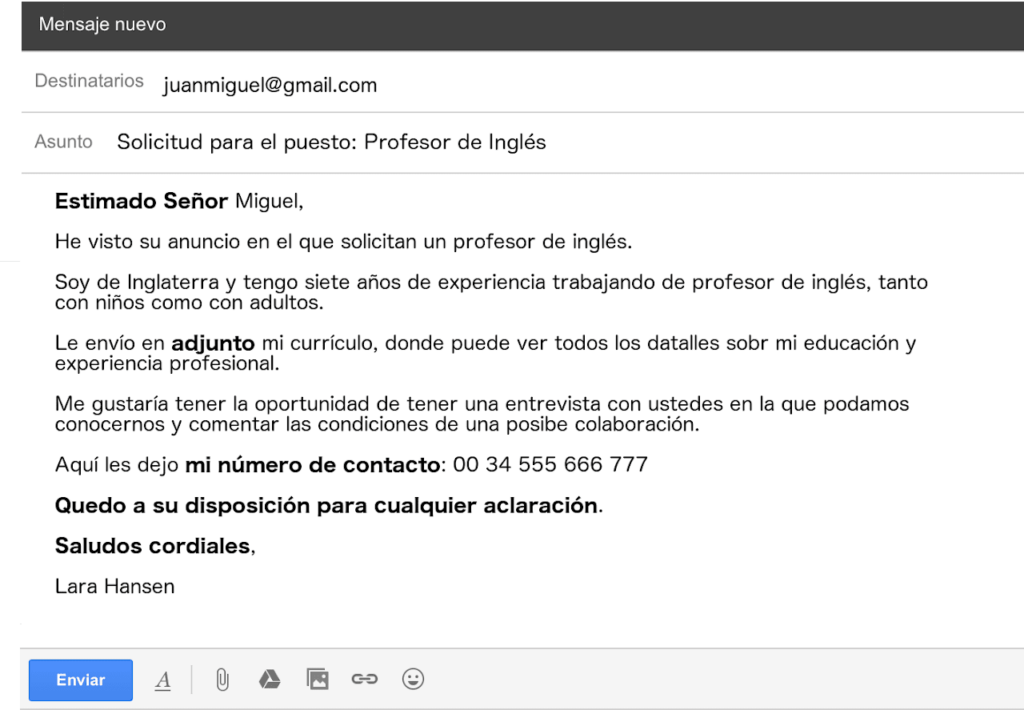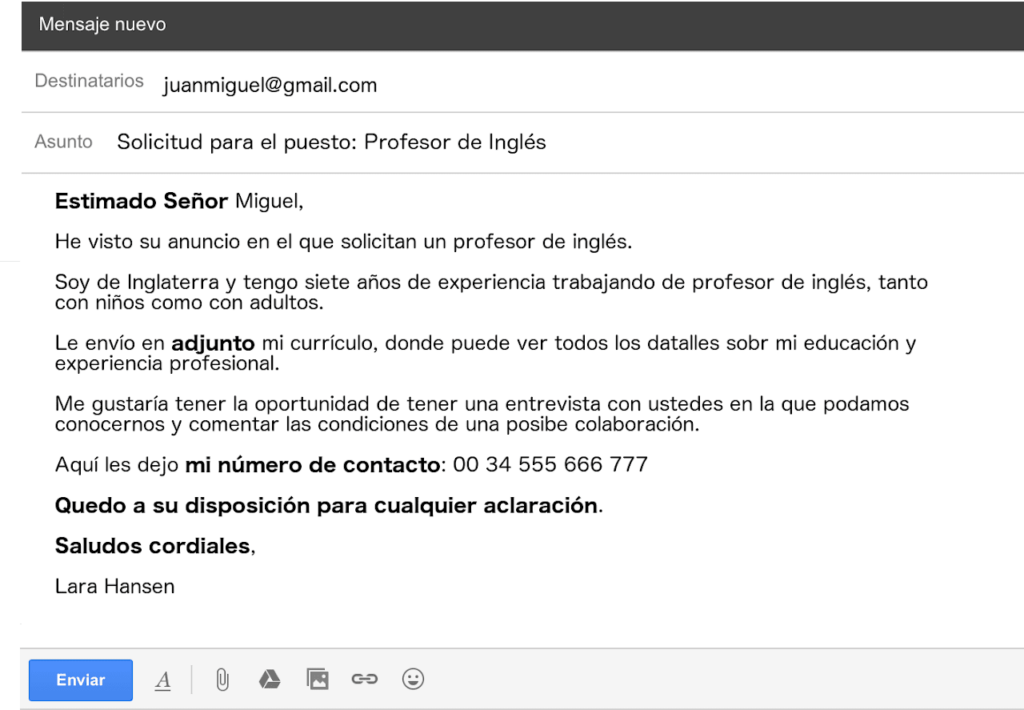Small talks; Casual conversation; in Spanish
Activities (Lesson Plans)
- Expressing Excitement in Spanish
- Expressing Excitement in Spanish Handouts
- Expressing Excitement in Spanish Slides
- Expressing Excitement in Spanish Worksheets
- Making Requests in Spanish
- Making Requests in Spanish Worksheet
- Choosing Direct or Indirect Requests in Spanish
- Choosing Direct and Indirect Requests in Spanish Handout
- Choosing Direct and Indirect Requests in Spanish Slides
- Social Distance in the Workplace in Spanish
Expressing Disbelief and Shock in Spanish
PRACTICAL IDEAS & RESOURCES
Resources in this section curated by: Nicole Williams
BEGINNER

9 ways to express surprise in Spanish | Blog Post
This article by ¡Tell Me in Spanish! is a great resource for beginners, as it focuses on 9 ways to express surprise by providing the Spanish phrase, the English equivalent(s) and direct translation, examples, as well as information on intensity and context for usage. I especially like this site as it explains how the Spanish phrase equivalent would be used in different ways in English to illustrate subtleties in usage (e.g., “No way!” versus “Jeez!”). It also offers variations of phrases that are used in several different Spanish-speaking countries, not just Spain. As an expressed goal of the author, Daniela Sanchez, introducing these phrases equips learners and speakers of Spanish to select phrases that best express their emotions and intensity in a way that is consistent to their personality.

How to express shock | Reddit Thread
Different from the YouTube videos and articles/blogs that have been provided as resources, this Reddit thread offers written, authentic access to online communication around expressions of shock in Spanish. With an original question posed by a Spanish language learner as to how to say certain phrases, the comments in the thread offer several different phrases and strategies reflective of the commenters’ identities (e.g., from Spain, Mexico, Argentina) with explanations in English of when someone might use the phrase. Commenters also shared other resources one could use to investigate more the different phrases one could use in different countries. There is an awareness of commenters to not simply provide the phrase or word to the original poster, but also give at least a brief explanation of when, why, and how you could use it. This is one of many examples of how learners could take advantage of apps not specifically made for language learning to get information that would help them improve on their language goals.

Spanish words and idioms of surprise | Blog Post
This blog is posted by a Spanish school called El Rincón del Tándem, detailing a few words and phrases learners of Spanish can use to sound more expert-like when they wish to express surprise. Each phrase is accompanied by a short description of when an expert-speaker might use the phrase, the English equivalent/direct translation, and some example sentences/situations. Created by expert Spanish speakers in Valencia, Spain, this is a brief, accessible resource for beginners to expand their vocabulary and pragmatic knowledge of ways to express surprise.
INTERMEDIATE

12 Spanish exclamations to add dramatic flair to your conversations | Blog Post
Including 12 Spaniard expressions of surprise and exclamations, this blog post offers common muletillas (slang exclamations) one might hear in central Spain. Of note, on top of providing the Spanish phrase and English translation, it offers tips on the specifics of how one might pronounce the phrase or word to mirror the emotion being felt (e.g., exasperation, surprise, etc.). With less focus on contextual information (e.g., when and with whom you would use the phrase), the emphasis on where to place stress or which vowel/sound to draw out to express the desired emotion can be helpful for learners.
ADVANCED

Guy speaks perfect Spanish, surprises barbers | YouTube Video
This video by a YouTuber named Nate provides expert-like Mexican Spanish from a non-native speaker. Interacting with some local Spanish speakers in his community, Nate practices his Spanish and looks to impress and surprise people who may not expect him to know Spanish (or speak it as well as he does). Taking viewers on an adventure, this video offers Spanish input in a real-life situation - getting a haircut and speaking with the barbers. Learners could use this video to observe real life expressions of surprise and explore specific phrases used between the types of people in the video (e.g., between males, between a returning client and barber, etc.).
Expressing Excitement in Spanish
PRACTICAL IDEAS & RESOURCES
Resources in this section curated by: Nicole Williams
BEGINNER

Mexican vs. American | Juanpa Zurita & Brent Rivera | YouTube Video
This video contrasts different situations between a son and his mother in American and Mexican culture (e.g., making breakfast, going to bed, breaking something in the house, etc.). There are a series of short clips in which the characters (played by two well-known YouTubers) express a range of emotions, including excitement and frustration, in Spanish and English. The skits are not direct translations of one another, rather, they highlight cultural differences and ways of expressing that are meant to be relatable. It also portrays some paralinguistic cues like facial expressions and body language that might accompany some of the language.
As a learning tool, this video offers a chance to observe and analyze phrases related to expressing excitement and frustration (among other emotions), language choices influenced by power (e.g., as the mother or the child), and contextual factors. While not specifically meant for language learning, the comedic intent highlights (and sometimes exaggerates) the language one might expect to find in the real world.

Diminutives and augmentatives in Spanish | Blog Post
As a more concrete, explicit teaching or learning tool, this blog post offers basic explanations (in English) of diminutives and augmentatives as they appear in Spanish. In my own experience, I didn’t explicitly learn about these two terms and how they related to pragmatics until I took a linguistics class - however, I had come across “-ito” and “-azo” forms before. As such, this resource is useful for a quick introduction to diminutives and augmentatives in relation to understanding how to express intensity and magnitude (whether this be for an emotion or a thought). It also includes brief descriptions of the context in which you would use certain augmentatives or diminutives and what kind of message would be conveyed. Intensity is an aspect often connected to expressing emotions in the research, as such, having an understanding of when and how to increase/decrease the intensity of a statement is a significant skill to possess. This is a great resource for learners and teachers to connect pragmatics with a grammar point, equipping learners with a practical knowledge to add to their linguistic toolkits. This would also open up great conversation about differences in which diminutive and augmentative forms are most common in different countries and cultures.
INTERMEDIATE

How to tell someone in Spanish that you're crazy excited to see them | Blog Post
One of the challenges in learning how to more accurately and creatively express emotions is the limited amount of set phrases that are taught to learners. For example, often learners are just taught “estoy contenta” to express happiness, but that doesn’t have the same intensity as trying to describe excitement. This article offers four commonly used expressions to convey excitement accompanied by explanations in English (when to use, why you might use it) and examples (with the original phrase or variations of the phrase). Learners and teachers could use this goldmine of information to explore the illocutionary forces of statements and imagine how they might want to use the statements (related to learner subjectivity). There is also specific mention of pragmatic pieces, such as explaining phrases you might use in different registers and contexts. Not only does learning these phrases add to their linguistic repertoire, but it allows learners to draw upon different ways of exuding personality and emotions. The article does a great job at presenting explicit information in an informative manner, offering insight into when, how, and why to use these four phrases and also giving extra explanations for variations on forms to be more creative with language use.
ADVANCED

Probamos barbacoa de puerco ¡así sabe! | YouTube Video
In looking for authentic (e.g., as language would occur in real life) instances of individuals expressing excitement, I came across a variety of videos related to food. Humans love a good meal! This video is a great resource for a number of reasons: 1) it provides learners with different phrases and means of expressing excitement, 2) it allows for analysis of context (in a restaurant, with a friend, sitting down at a table to eat, etc.), 3) the rate of speech is faster than ones likely used in the classroom, but the speaker enunciates very clearly, and 4) it exposes learners to a variation of Spanish from a speaker who is not typically imagined when learners are introduced to expert Spanish speakers. This is also an opportunity for learners to explore the comments below (which are mostly in Spanish) to see how people are reacting to the video and expressing excitement in written form (which could expose them to shorthand and texting/writing conventions).

Bungee a 100 metros de altura ft. Juca | YouTube Video
This resource for advanced learners involves a Mexican YouTuber who creates vlogs. This video in particular is part of a larger series in which Juanpa is pushing himself out of his comfort zone and choosing to experience things that he might have otherwise put off (for fear, for time, etc.). As a resource, this video offers authentic input for learners from an expert speaker on a topic that might be more interesting than the ones typically provided in language classes. Learners can pay attention to the age of the speaker, the context in which people are speaking, who is being spoken to, etc. in this video. Additionally, I chose this video as a great example of expressing emotion through intonation and prosody, as Juanpa uses voiceovers throughout the video to describe some of the videos, and viewers cannot visually see any expressions to decode his level of excitement or emotion. Juanpa is very expressive in his way of speaking, giving learners inspiration and modeling for how they might be able to manipulate their prosody to convey the level and intensity of emotion they would like.

Visito Barcelona con una guía turística de 1887 | YouTube Video
In this video, Judith Tiral, a YouTuber who often does videos exploring the history and stories behind different phenomena, goes on a tour of Barcelona using a historical guide from 1887. Seeing as learners have a wide range of interests, this video may be of interest to those with a fascination for history, traveling, and learning niche facts. It also serves as an opportunity to observe a different expert speaker of Peninsular Spanish, and her manner of expressing excitement. Learners could examine differences between ways of expressing emotion in real life between interlocutors and how YouTubers often speak to their cameras/audiences. Paying attention to specific phrases she uses, as well as her prosody, learners can observe and hear expressions of excitement in an authentic and engaging way.
Expressing Frustration in Spanish
PRACTICAL IDEAS & RESOURCES
Resources in this section curated by: Nicole Williams
BEGINNER

11 ways to express your frustration in Spanish | Blog Post
As beginners are looking to expand their vocabulary, it can be helpful to have written information to reference that offers details on explicit grammar points, examples, and context. This article does such a thing as it introduces learners to 11 common expressions of frustration that are used around the world. Not just centering Peninsular Spanish varieties, this resource includes expressions used in a variety of Spanish speaking countries and contexts. For some phrases, it also explains who might use the phrase and why, offering not only explicit grammar points, but pragmatic details as well. Additionally, while some phrases might be familiar, there is a good mix of metaphors or more illustrative phrases learners could employ to express their frustration. Notably, the article emphasizes reading carefully through the presented information so as to “find the right expression for your situation.” Thus, this is a great resource for beginners to start to unpack some of the pragmatic layers and think through intention as a speaker trying to convey frustration, and how to do so in a way that would reflect the intensity and authenticity of the feeling that is being experienced.

Spanish phrases to use when you're angry | Phrase Audio
This resource provides recorded snippets of 16 expressions or phrases to use when you are upset. While many of the other resources are written blogs, this site offers a chance for learners to listen to expert speakers pronouncing these phrases and words. Of note, it may be a particularly interesting exercise to compare the recordings of the phrases to how they would be used in real life - upon listening, some phrases are pronounced with the listener in mind as opposed to being spoken with real frustration or anger. More specific instruction in a classroom could cover differences in prosody in different settings and when speaking to different people. Ultimately, this resource offers audio examples of phrases instead of just written information - although it is best accompanied with more structured discussions about when, how, and why to use these.

Christmas in September, why not? Comprehensible input to learn Spanish | YouTube Video
This YouTube video, created by a channel called Spanish After Hours, is specifically made for beginner learners of Spanish. The creator pays careful attention to their tone, rate of speech, and clarity of pronunciation so as to produce comprehensible input that is still semi-authentic in context. The video is about the creator decorating their apartment, talking through putting ornaments on a small tree and setting up figurines. There are also Spanish subtitles that are put on the screen to accompany the audio. The phrases of frustration are spoken in a slightly different manner than other videos, as the creator is only speaking to the camera and expresses almost exasperation in laughter at some mistakes they make while decorating. This video would be great for beginners to get Spanish only input on an interesting topic that is comprehensible.
INTERMEDIATE

How to express anger in Spanish without being rude | Blog Post
This article provides a wealth of information on different strategies to express anger, including a note on false cognates, prepositions, adjectives, and sentences. There are detailed explanations of pragmatic information such as what preposition to use to express anger at someone or something, intensity of a phrase, and how you can use it with certain people (e.g., with friends). It also provides comparisons of direct English translations with different Spanish prepositions, adjectives, and verbs. It would nicely accompany instruction on the subjunctive mood and expands the verbs that would trigger subjunctive to express anger. The example phrases that they give are also contextualized with a hypothetical scenario in which you would use it. The article provides various forms of expressing anger that do not involve profanity (a feature boasted by the article itself).

9 ways native speakers express anger in Spanish | YouTube Video
This video was created by a YouTuber named Juan who creates videos for people interested in learning Spanish. A step further from written explanations, this video provides a variety of Spanish that is not often included in Spanish classrooms. Though it was created with learners in mind, various phrases are shared in the context of a short skit demonstrating how they might be used. Juan offers explanations and context in English before showing a skit in Spanish (though Spanish and English subtitles are shown during these skits). Special effects are included which emphasize the frustration expressions and how they are used. Notably, the expressions Juan includes are introduced with a slide that has the Spanish phrase, the English idiom/equivalent, and the literal English translation. This video would be a great way to expand on cultural competence by analyzing the pragmatics of this phrase and how it would be interpreted across Spanish-speaking countries, as well as the relationships that are shown in the video (e.g., one phrase was used with a stranger who was a marketer). Learners could also analyze the types of instances that trigger specific frustration phrases, relating to severity of an action.

Feeling mad? 28 expressions of anger for your bad mood | Blog Post
This article pays close attention to the importance of intensity and having words to express that intensity, relative to the appropriateness of a situation and how a person is actually feeling. Listing 28 expressions one can use to show anger or frustration, the article briefly explains (in English) the kind of context you would use this phrase in (in regard to intensity of anger felt), the English equivalent or direct translation, and sometimes an example. Though this list is limited in its explicit pragmatic descriptions, it can be used as a starting point to open discussion on when, with whom, and why one would use each phrase. The variety of expressions also lends itself to providing learners with a selection to choose from that best fits their needs, personalities, and how they wish to express themselves and their (intense) feelings. Lastly, this list incorporates phrases from Peninsular Spanish and Latin American Spanish dialects, creating an opportunity to cross-culturally compare phrases and their meanings.
ADVANCED

A list of Spanish slang expressions for ANGRY: 12 ways to sound like a local | Blog Post
This list of expressions of anger extends a learner’s vocabulary from set academic phrases to slang phrases one might find in various Spanish speaking countries. Instead of limiting one’s repertoire to “enojada” or “furiosa,” the list helps learners express more intense manifestations of anger in more colorful, creative ways. Sometimes we are direct with our explanations of feelings, and sometimes we pull on different strategies to more indirectly or metaphorically express ourselves. One limitation of this source is that it only offers the specific phrase and a short explanation in English of the literal meaning and why one might use it. As such, learners and teachers should take care to do more research on these phrases and how they might be used in real life.

Cuando tu amigo y su novia discuten delante de ti | YouTube Video
Involving a variety of Spanish not always included in the Spanish classroom, this video uploaded by a popular Spanish-speaking YouTuber named Ibai records an interaction between a friend and his girlfriend getting into an argument. Expressions of anger fly left and right out of both the boyfriend’s and girlfriend’s mouths as they argue over dinner reservations, getting there on time, and saving face in front of friends. This video is particularly interesting to analyze, as there are multiple layers of pragmatics related to boasting in front of friends, gender effects of communication, relationship dynamics in a couple, and intensity/prosody of anger expressions. A larger conversation on relationship scripts and expectations (and how those are portrayed linguistically) could be touched upon in class to properly analyze the video and its content.
Making Requests in Spanish - Power
PRACTICAL IDEAS & RESOURCES
Resources in this section curated by: Anna Krinitsyna, Anne Walkup, Isabella Walters

Conversation | Instagram Post

This Instagram post by @72kilos offers a somewhat complex example of forming a request based on power and social distance. Although the daughter is addressing the mother, the informal command is used because this is common in Spain among people who have a close relationship despite differences in age and status.
Making Requests in Spanish - Social Distance
PRACTICAL IDEAS & RESOURCES
Resources in this section curated by: Anna Krinitsyna, Anne Walkup, Isabella Walters

Social Distance | YouTube Video
This is a short, helpful video by CASLS that explains the concept of social distance. As with all CASLS videos, this one would be helpful for instructors and learners to view when learning about social distance.

Making a Request in Spanish | Image

This graphic explains how to ask someone to do something for you. Person 1 uses "puedes" as a hedging technique, which results in a more indirect request. Her second request, "Necesitamos..." is even less direct since it is presented as more of a hint at what person 2 should buy.

8 Ways to Ask for a Favor in Spanish | Webpage
When asking for a favor, there are many options depending on the severity of the favor.This articleoutlines options for asking friends and family members for large and small favors.

The Essential Guide to Being Polite in Spanish | Blog Post
Using polite words like these when making a request is great if the goal is communicating something respectfully. In situations with + Distance, meaning that the people in the interaction do not know each other well, it is common to use these polite phrases that are mentioned in this post throughout the interaction.

Email | Image

In this email, Lara requests an interview with Señor Miguel. She uses the conditional form of gustar to make this request, which is a more formal and indirect form. This is a perfect example of power relations because Señor Miguel is in the decision-making position and, therefore, Lara addresses him with respect.

Making Requests in Spanish and Asking for Favors | Blog Post
This post focuses on the verb poder in requests, including present tense and conditional conjugations. The embedded audio clips demonstrate differences in distance, power, and severity, including polite/formal requests like "¿Podría ir a la tienda a comprar esto?" and informal requests like "¿Puedes abrir la puerta?"

Conversation | Instagram Post

This Instagram post by @72kilos offers a somewhat complex example of forming a request based on power and social distance. Although the daughter is addressing the mother, the informal command is used because this is common in Spain among people who have a close relationship despite differences in age and status.
Making Direct and Indirect Requests in Spanish
PRACTICAL IDEAS & RESOURCES
Resources in this section curated by: Anna Krinitsyna, Anne Walkup, Isabella Walters

Making a Polite Request | Webpage
This article explains how to make polite requests with varying degrees of directness. Level of directness often depends on where you are, who you are talking to, and what type of request you are making.

Making Requests in Spanish: Vocabulary & Expressions | Video
This video explains a variety of ways one can make a request. The main character in the video is a Spanish learner who discovers that certain forms of requests tend to be taken better in some situations than in others.

How To Make Commands and Requests in Spanish Without the Imperative | Webpage
Sometimes, commands are the best option in Spanish for giving more direct requests. This article outlines some common ways of using commands to make requests when directness is appropriate.

How to Order Drinks | YouTube Video
A common example of a direct request is "yo quiero," followed by a food or drink. While this request may seem impolite, it is completely acceptable and even expected. This and other common requests are discussed in this video.

How to Make a Hotel Reservation in Spanish | YouTube Video
A common situation in which someone would use an indirect request is when booking a hotel room. In this video, the phrase "quisiera un cuarto con baño privado" is used to request a room with a private bathroom. While she does not directly ask for a room, the woman in the video effectively communicates what she wants by hinting at it with an indirect request.

How to Make Polite Requests in Spanish | Webpage
This article discusses various indirect phrases to make polite requests, such as "quisiera" and "me gustaría," both of which are polite but are used in different contexts. "Podría," "a ver si," and the use of "por favor" are also discussed.

Image Example | Instagram Post

This Instagram post by @cursinea demonstrates a situation in which an indirect request would be appropriate. The character is requesting that whoever is reading the post have a positive attitude in their day-to-day life, rather than only show positivity on social media. Because this is more of a suggestion of what someone else ought to do, the present subjunctive tense is used to form an indirect request.

Making a Request in Spanish | Image

This graphic explains how to ask someone to do something for you. Person 1 uses "puedes" as a hedging technique, which results in a more indirect request. Her second request, "Necesitamos..." is even less direct since it is presented as more of a hint at what person 2 should buy.

'Dancing with Words' | Lesson
This website is a comprehensive resource dedicated to Spanish pragmatics. It includes lessons for various speech acts, including requests. It can be used for self-study and as a supplement in the classroom context with adults (and possibly high-schoolers). Learners interact with the page by reading text, watching videos and entering answers in text-entry question boxes. This lesson starts with a study of requests, then covers strategies, then social factors. It even takes a look at dialectal variance and ends with a summary.

CARLA: Pragmatics and Speech Acts | Webpage
The Center for Advanced Research on Language Acquisition (CARLA) has created a wonderful resource for studying the pragmatics of different speech acts, including requests, in different languages, such as Spanish. This is a direct link to information about requests in Argentinian Spanish. While there is not a lot of information included on this page, there is an example of a direct and an indirect request and a citation to a scholarly article on the topic.
Common Mistakes when Making Requests in Spanish
PRACTICAL IDEAS & RESOURCES
Resources in this section curated by: Anne Walkup, Isabella Walters

Don't Say "Me Gustaría" [10 Better Alternatives in Spanish] | Blog Post + Video
"Me gustaría" is commonly misused by L2 Spanish speakers in a service setting. This post points out that it is too formal for a restaurant or service encounter. Some alternatives to this phrase are "me da" (give me), "me trae" (bring me), and even "lo molesto con" (can I bother you for). The latter is used primarily in Mexican dialects of Spanish.

PUEDO TENER is WRONG! Here's How to Ask for Things in Spanish | YouTube Video
This YouTuber explains that "puedo tener" does not translate to "can I have" and should therefore not be used to order food in a restaurant. She alternatively suggests phrases like "para mí," "me podrías traer," "me podrías dar," "me das," etc. She uses the informal conjugation in all of these and suggests that Spanish learners memorize some of them so they don't have to think about conjugations while ordering food.

How to Order Food in Spanish | YouTube Video
YouTuber Maria acts out an interaction between a Spanish-speaking server and a Spanish learner. The Spanish learner does not understand anything that is being asked, so she says "si" to everything. In the discussion afterwards, Maria suggests that "no entiendo" is a more appropriate response that avoids further miscommunication from occurring. It can be daunting to speak a second language in a public setting, but simply agreeing to everything hurts more than helps.

Ordering coffee in Spain | TikTok
When ordering drinks in Spanish, it's important to know what to call them. Even if you know how to ask for a drink, you won't have much success unless you can name the drink that you want. This TikTok video names many types of coffee and also points out that "lattes" are not called that in many Spanish-speaking countries, including Spain. Learners often make the mistake of ordering a latte or something else in coffee shops that does not exist under that name.

Learn Spanish: Common Mistakes In Ordering Food In Spanish | Webpage
This article explains common mistakes speakers make whose first language (L1) is English when ordering at a restaurant. Although the same request structures exist in both Spanish and English, the pragmatic meaning doesn't translate. Included are three phrases that should not be directly translated from English in a request-making situation, as well as alternatives that are more pragmatically appropriate.

How To Make Requests In Spanish And Alternative Ways To Give Commands | Blog Post
L1 English speakers sometimes form requests using the future tense, i.e.: "Will you shut up?" This structure does not hold the same meaning in Spanish. This article offers three alternative ways to say this that makes sense in Spanish.
Making Service Requests in Spanish
PRACTICAL IDEAS & RESOURCES
Resources in this section curated by: Anne Walkup, Isabella Walters

Making requests in Spanish | How to use the word QUISIERA | YouTube Video
Quisiera is the imperfect subjunctive form of querer. It is an indirect request used mostly in a service context. This video explains appropriate ways in which quisiera can be used to make a service request in Spanish.

How to order food in Spanish - Español nivel intermedio - avanzado | YouTube Video
This video reviews, in detail, a service encounter in a restaurant in Colombia. Maria uses the phrase "hágame un favor" to initiate her request, followed by "me da un(a)..." which is a direct request. One may think that a direct request cannot also be polite, but this is not the case. She uses the usted form of dar in this request, addressing the cashier with respect, while still not sounding too formal. She also discusses how phrases like "me gustaría" and "me podría" are grammatically correct, but may sound less natural than desired in a service setting.
In some varieties of Spanish, it is common to use the verb encargar when ordering food and drinks. For example, one could say to a waiter, "Te encargo una limonada," which would be considered a polite yet not overly formal way of ordering a drink. This construction is mostly used in Mexico, Guatemala, and Costa Rica. The article outlines further examples. In other cases, such as in Spain, using an informal command is preferred: "Ponme un cafe con leche." Simply stating what you want is not considered rude either: "Un cafe con leche, por favor."

From Coffee to Shots: How to Order Drinks in Spanish Like a Local | Blog Post
Ordering drinks in Spanish is completely different from ordering drinks in English. According to the blog post, it is widely common to order drinks directly. In a bar setting, typical phrases include "tomo," "dame," "quiero," y "ponme," followed by a drink. The same is true when ordering a coffee. It is also common to refer to drinks by their brand names, such as when ordering a soda. You're more likely to hear "Dame una Coca-Cola/una Fanta/etc." than "yo quisiera un refresco."

Real Spanish conversations: in the taxi/en el taxi | YouTube Video
A tourist from Canada requests a taxi ride in Mexico. She says, "Quiero ir al hotel San Miguel. ¿Me puede llevar?" She addresses the taxi driver both directly and formally, with the usted form of poder. They make friendly conversation for the rest of the ride.

Check-In at Your HOTEL in Spanish: ALL Phrases You’ll Ever Need | Webpage with Video
This video and accompanying description covers many phrases you would use to check into a hotel or Airbnb, everything from requesting a certain type of room to asking for a replacement key or the wifi password.
ACADEMIC RESOURCES ON EXPRESSING EMOTIONS IN SPANISH
Resources in this section curated by: Nicole Williams
GENERAL RESOURCES
Dewaele, J-M. (2010). Emotions in multiple languages. Palgrave Macmillan. https://doi.org/10.1057/9780230289505
This book covers a wide range of topics related to emotions in multiple languages, such as the intricate role emotions play in identity construction (in the first and subsequent languages), expression, and social interaction. The book sheds light on the factors that can impact monolingual and multilingual language choices.
This is a great resource for building foundational understanding of research on emotions and the language we use to express them. Positing the idea that multilinguals learn to navigate the world in multiple ways, Dewaele delves into the complicated language systems speakers build and possess and the subsequent ways they choose to engage in the world and express themselves. The author also explores the implications of existing through more than one language and how that impacts the experience and expression of emotions.
Dewaele, J-M. (2011). Self-reported use and perception of the L1 and L2 among maximally proficient bi- and multilinguals: A quantitative and qualitative investigation. International Journal of the Sociology of Language, 208(2011), 25-51. https://doi.org/10.1515/ijsl.2011.011
Interested in exploring the effect of emotional intensity and connection to a speaker’s first language (L1) and second language (L2) on expressions of emotions, Dewaele investigates the language choices of bi- and multilingual participants. The author draws upon past literature highlighting the choices bilinguals make when describing how they feel and how they perceive their emotions being portrayed as intensely as they desire in the L1 versus L2. Tied up in memories and experience, there is a general belief that bilinguals will default to the language that is most strongly connected to the emotional experience of a certain word or phrase (e.g., the difference between saying “I’m sad” and “Estoy triste”). Investigating participant-reported explanations for L1 or L2 choices to express emotions such as frustration, sadness, or love, several interview excerpts were analyzed to reveal a preference for the L1 to communicate feelings, even in cases where participants identified as equally using their L1 and L2.
The findings of this study are relevant for understanding how learners engage with the L2, especially in the classroom. While building up an emotional connection to the L2 can (and will) take time, often that emotional distance can be exacerbated when learners are focused on studying the language rather than acquiring the language. Thus, teachers could heed the findings in this study to create opportunities for learners to connect emotionally with the L2 in more than superficial ways. For example, rather than drawing lines connecting drawings to emotion words, questioning how they can create a context for learners to really experience said emotions words. Additionally, this study peripherally highlights frustration learners may feel at an inability to properly express themselves in the L2, especially if they feel they are disconnected and inauthentically being perceived. This article could spark interesting conversation around L2 identity construction and the importance of experimenting with language use in ways that feel genuine to the learners themselves.
Dewaele, J-M. (2013). Multilingualism and emotions. In C. A. Chapelle (Eds.), The Encyclopedia of Applied Linguistics (pp. 1-7). Blackwell Publishing Ltd. https://www.researchgate.net/profile/Jean-Marc-Dewaele/publication/284179849_Multilingualism_and_Emotions/links/5a0e9bbf0f7e9b7d4dba6bc7/Multilingualism-and-Emotions.pdf
This article investigates an intriguing question: are emotions universally experienced or are they differentiated based on the language they are felt in? Dewaele draws upon past research on “language of the heart”, a term referring to the language through which we feel most intensely - the language that is deeply wrapped up in our encoded experiences. Generally, decisions over how to express emotions (in either the L1 or L2) were influenced by the intensity of the emotion and the identification of the language deemed as emotionally strong to convey that feeling.
This article offers reassurance and explanations of why we struggle to express ourselves in a way that feels “natural” and “authentic” in the L2. Learning a language is not simply memorizing set phrases and saying them whenever; the use of language is inherently tied to emotions. Our emotions often serve as impetus for choosing specific ways to express ourselves, and the choices we make can also reflect our personalities and identities.
For learners who are emergent bilinguals, this process of reconstructing emotional connections and building them with the L2 can be frustrating or exasperating. Having a teacher who can guide them through this - or even the knowledge presented in this article - and assure them that this is natural and expected could do wonders. It might also encourage learners to experience new things in the L2 to more easily build an emotional connection. Though the L1 is often the language of the heart, it doesn’t always stay that way - new, strong emotional connections can be established.
Dewaele, J-M. (2008). Dynamic emotion concepts of L2 learners and L2 users: A Second Language Acquisition perspective. Bilingualism: Language and Cognition, 11(2), 173-175. https://doi.org/10.1017/S1366728908003313
Here, Dewaele discusses pragmatic implications of L2 learners’ and users’ L2 usage. The idea of “emotion concepts” is first examined, which is the idea that there is a conceptual link between language use and illocutionary (i.e., speaker’s/user’s intended meaning) force. Each individual has created an emotion script which they call upon to decode and navigate interactions. The availability of an emotion script in the L1 or L2 can influence language choices in the L2, such that a person may choose to express themselves in accordance with their L1 emotion script because it feels more authentic. Essentially, while there might be an intellectual understanding of grammar and vocabulary in the L2, an emotional connection to the language (that is forged through experience in the L1) may impact how one chooses to react in an L2.
Understanding the influence of emotion and concept building in the L2 is crucial to developing as an L2 learner and L2 user. As a teacher, it serves as a reminder that sometimes what is spoken isn’t always felt - that learners may choose to express themselves in unexpected ways because it is more closely aligned with how they interact with the world in their L1. This knowledge can help explain the emotional distance a learner might experience in a relationship between themselves and the L2, and might bring awareness to how learners can overcome this if they feel it is a barrier to their ultimate language goals.
Dewaele, J-M., & Pavlenko, A. (2002). Emotion vocabulary in interlanguage. Language Learning, 52(2), 263-322. https://doi.org/10.1111/0023-8333.00185
In an effort to uncover factors impacting the “use of L2 emotion vocabulary”, Dewaele and Pavlenko conducted two studies investigating variables of language proficiency, gender, extraversion, sociocultural competence, gender, and type of linguistic material. This study expands understanding of personal factors that may impact language use. Specifically, the authors investigate the acquisition and employment of language words in the L1 and L2 in relation to intensity of emotion experienced. The researchers analyzed corpora data in various languages, with an emphasis on emotion scripts and specific vocabulary used.
As with the other articles, this study lends itself to the understanding of learners and teachers that establishing an emotional connection with the L2 impacts use of the L2. Expanding on the idea that there is a relationship between cognition, emotion, and language the authors bring attention to the idea that even the words we use to describe our emotions can fall short at accurately and completely describing how we feel. This knowledge can serve as inspiration for teachers and learners to seek out information on different strategies to express their emotions in a variety of ways so they are not just limited to the few phrases included in their textbooks.
INTENSITY AND DEGREE
Czerwionka, L., & Olson, D. J. (2020). Pragmatic development during study abroad: L2 intensifiers in spoken Spanish. International Journal of Learner Corpus Research, 6(2), 125-162. https://doi.org/10.1075/ijlcr.19006.cze
Czerwionka and Olson analyze the frequency of use of intensifiers by expert Spanish speakers from Madrid and study abroad L2 Spanish-speaking students. Recognizing that skillful use of intensifiers requires a more advanced communicative competence rather than mere linguistic grasp, the researchers explore the change in use of intensifiers of study abroad students throughout a 6-week study abroad immersion in Madrid, as measured by frequency, lexical diversity, and collocation. Findings suggested that though there was no significant change in frequency of intensifier use, the immersion program did have an effect on intensifier lexical diversity (e.g., range of intensifiers employed by speakers) and collocations (e.g., “muy bien,” “bastante bastante diversa”).
While the findings of this study are rather dense and involved, there are a few key points to be gleaned. First, cross cultural differences in use of intensifiers is discussed and acknowledged. Second, there are a host of examples of collocations with common intensifiers provided in this study. Third, the discussion highlights the curiosity surrounding immersion programs and their impact on sociopragmatic development, for instance, in acquiring an expert-like handle of intensifiers. Finally, this study offers three important factors (intensifier frequency, lexical diversity, and collocations) which learners can explore in more depth to act as a triangulation of sorts in figuring out the appropriateness of using a specific intensifier.
Masullo, P. J. (2017). Exclamatives in (Argentinian) Spanish and their next of kin. In Bosque, I. (Eds.), Advances in the analysis of Spanish exclamatives (pp. 108-138). The Ohio State University Press.
This chapter focuses on the construction of exclamatives in Argentinian Spanish. Providing information on covert exclamations (and the use of specific prepositions and what they imply), Masullo lays foundational grammatical and syntactical information for how to construct exclamations in general. The chapter offers a linguistic analysis of sentence structure and different ways to express intensity and degree, illuminating the use of elatives (words ending in -ly), hyperboles, and reflexive verbs (e.g., “se comió todo”). The author concludes by emphasizing the variability that exists in constructing exclamatives - and the abundance of “attitudinal meanings” that are attached to specific formations (p. 137).
Though this article is abound with linguistic terms and analysis, it also offers a key point: grammar and vocabulary can be manipulated to express intensity and emotion. Gaining an understanding of the effect of a certain structure rather than just its conjugation or formation allows learners to correlate meaning with form. It also builds an awareness in learners that the forms we are taught in schools are not always representative of how creatively they can be used in the real world.
Ramon, N., & Labrador, B. (2008). Translations of “-ly” adverbs of degree in an English-Spanish parallel corpus. Target, 20(2), 275-296. https://doi.org/10.1075/target.20.2.05ram
This article investigates the translatability of “-ly” English adverbs to Spanish (and vice versa) in maintaining original meaning. They note that adverbs serve many roles, among them to express manner (e.g., the quality of an action, “I did badly”) and degree (e.g., the intensity of a verb, “It was poorly constructed”). Upon analysis of a corpora of fiction and non-fiction books, Ramon and Labrador examined the function of adverbs across both languages to identify similarities and differences. Findings suggested that there are “many-to-many relationship[s]” (p. 292) that can exist, with one adverb, “completamente” mapping onto several English equivalents.
While adverbs are commonly taught in classrooms as 1:1 translations in usage (e.g., meaning and degree), it is clear from this article that much variability exists. Importantly, the syntactic and pragmatic information that is encoded in adverbs underscores the importance of knowing which word in a phrase the adverb is modifying. Interestingly, while there are several ways in Spanish to form an adverb, it does not always involve tacking on “-mente” at the end of a word.
Not only does this article offer an in-depth analysis of the trickiness of direct translations and conveying similar meanings across Spanish and English, it also provides learners with examples of different Spanish options to form -ly adverbs. Understanding the ways in which adverbs can be used to express manner or degree can be helpful for learners should they use -ly words to augment expressed emotions. Thus, this article would be a great addition to expand upon adverbial knowledge being taught in a classroom and embed pragmatic awareness.
Roels, L. & Enghels, R. (2020). Age-based variation and patterns of recent language change: A case-study of morphological and lexical intensifiers in Spanish. Journal of Pragmatics, 170(2020), 125-138. https://doi.org/10.1016/j.pragma.2020.08.017
This work explores changes in the construction and use of intensifiers in Madrid in real time. Contingent upon the idea that intensifiers act as an extension of a speaker’s subjectivity (e.g., are bound in emotions and attitudes experienced by the speaker (p. 127)), Roels and Enghels examine generational differences in the use of morphological (e.g., suffixation or prefixation) and lexical (e.g., adding in specific words) intensifiers. They present instances of positive and negative adjectival intensifiers (e.g., “superconsciente” versus “una mierda”). Findings suggested some correlation between age and intensifier use, but mostly suggested the existence of a wide variety of intensifiers that are used across generations.
This article provides helpful information about how and why intensifiers are used in expert-like speech, emphasizing the creative license speakers employ when working in different intensifiers. Learners could use this article as inspiration for how to incorporate intensifiers into their own speech in a way that would help authentically express intensity and emotion. Detailing three main strategies - suffixation (e.g., augmentatives (“-azo”) or superlatives (“-ísima”)), prefixation (e.g., “super bien”), and other lexical strategies (e.g, “mazo de amor”) - the article provides grammatical and practical information (p. 130-131) learners can utilize and add to their linguistic repertoires.
Roels, L., De Latte, F., & Enghels, R. (2021). Monitoring 21st-century real-time language change in Spanish youth speech. Languages, 6(162), 1-24. https://doi.org/10.3390/languages6040162
Curious as to the rate of change in language patterns in Spanish, the authors of this article hone in on youth speech. Specifically, the authors examine the speed at which youth speakers generated and used innovative language (e.g., intensifiers) through analysis of corpora data collected longitudinally from the same group of speakers. The authors highlight the amount of variety that exists in choosing to use intensifiers, for example, within a sentence, speakers can select from prefixes, suffixes, adjectives or adverbs or create more sophisticated intensifiers by stringing different parts of speech or clauses together. Findings suggested that the speed of linguistic change was not as dramatic as expected, however, there was evidence of certain forms and versions of intensifiers to remain stable in use or fluctuate more variably due to popularity.
Roels, De Latte, and Enghels offer direct quotations from dialogues registered in the corpora, presenting learners with a slew of examples to analyze in terms of context, topic, speaker identity, and purpose. This study is especially pertinent for learners who wish to express themselves in Spanish as presenting very youthful - or those who are generally interested in how young people their age choose to express intensity in Spanish. If anything, learners can pay attention to the diversity of forms intensifiers can take to then explore and use at their discretion.
METAPHORIC LANGUAGE
Kövecses, Z., Szelid, V., Nucz, E., Blanco-Carrion, O., Akkök, E. A., & Szabó, R. (2015). Anger metaphors across languages: A cognitive linguistic perspective. In R. Heredia & A. B. Cieślicka (Eds.), Bilingual figurative language processing (pp. 341-367). DOI: 10.1017/CBO9781139342100.017
This chapter examines and compares conceptual metaphors for anger in four different languages. Drawing from corpora in American English, Spanish, Turkish, and Hungarian, anger metaphors were identified in terms of “metaphorical salience”. A detailed analysis is included of conceptualizations of anger and the types of things each language compares it to within the metaphor (e.g., rising of liquid, a weapon used in a fight, related to temperature/heat, pressure being released). Notably, Kövecses et al. draw attention to the emphasis on intensity and control as salient aspects of metaphoric expressions of anger, shedding light on how the four different cultures generally view and exude anger.
Though larger in scope, this article provides a great opportunity for the cross-cultural comparison of anger, emphasizing the idea that emotions are subjective and not universally experienced. The paper includes various examples of the metaphors, their functions, and how they might manifest in speech, while also providing cognitive commentary as to why anger might be expressed in such a manner in a particular language. Because anger can be a rather intense emotion, learners would benefit from understanding deeper cognitive connections and conceptual basis for a language’s or culture’s expression of anger in a specific way. Learners could also assess the kinds of metaphors they might use to express their anger and how it is similar or different from conceptualizations available in Spanish.
Paris, J. (2014). The expression of emotions by second language learners: Metaphor as a linguistic vehicle. Poznań Studies in Contemporary Linguistics, 50(1), 99-121. https://doi.org/10.1515/psicl-2014-0006
Paris explores the use of metaphors to convey emotions and emotional states in writing by students with a first language (L1) of French and second language (L2) of English. Underscoring the complexity of emotions, especially when factoring in the inability to directly translate feelings from an L1 to an L2, Paris was interested in learners’ strategic use of metaphors to describe their feelings. Noting that the tendency to describe things non-literally is apparent in many languages, Paris contends that the words we use influence how we think and feel and vice versa.
Collecting writing samples from participants in the form of responses to prompts (e.g., “Could you live in a foreign country?”), Paris analyzed the samples for use of non-literal language (e.g., personification, comparisons, idioms, and metaphors). Findings suggested that L2 speakers of English sometimes employed metaphoric language to express emotions that might have been more difficult to directly translate from their L1. In this sense, the abstract helped convey the specific.
This article is comforting in its support of the idea that emotions are not easily translatable between languages. Moreover, in the act of translating emotions, sometimes the intensity is lost or lessened. Using this article as a means of raising awareness of this phenomenon, teachers and learners could explore the pragmatic function of metaphors. For example, knowing that L2 speakers chose to use metaphors to express their feelings - what affected this decision? Who were they speaking to? What were they speaking about? Why did they choose a metaphor as opposed to a simile or personification? The third person analysis of subjectivity is a great chance to think metacognitively about the language choices of someone else before applying that same line of thinking to one’s own choices.
Reali, F., & Arciniegas, C. (2015). Metaphorical conceptualization of emotion in Spanish: Two studies on the role of framing. Metaphor and the Social World, 5(1), 20-41. https://doi.org/10.1075/msw.5.1.02rea
Rooted in conceptual metaphor theory - the theory that “language shapes thought” Reali and Arciniegas conducted a corpus analysis to reveal some metaphors related to emotional concepts. The researchers were interested in different emotion metaphors available in Spanish, as well as the impact of using metaphors to express an emotion in how that emotion is perceived. They chose to focus on two metaphors - “emotions are fluids in containers” and “emotions are bounded spaces” - to narrow the scope of the study. Spanning several genres of written text, the authors provide numerous examples of metaphoric language used to express emotion while drawing connections between the type of metaphor used and the quality of the emotion felt (positive or negative). Interestingly, “bounded” metaphors were more frequently used to describe negative emotions, such as “trapped in [emotion]” or “caer en [emotion]” (p. 31). Interestingly, the portrayal of an emotion as bounded versus fluid-in-a-container affected the perception of said emotion.
Similar to the other articles, this one proposes that emotions are not stagnant, removed experiences, but rather uniquely tied up in and affected by language. Understanding how a language and culture conceptualizes emotions through metaphors gives us a glimpse into how emotions are processed and experienced. Especially when considering the description of positive versus negative emotions, learners could do well to recognize the type of emotion metaphor being used and draw connections to the psychological state of the speaker. In the classroom, this article could prompt conversation around the complexity of emotions and the need for the acquisition of more strategies to express those emotions beyond simple words and phrases typically taught in textbooks.
Soriano, C. (2003). Some anger metaphors in Spanish and English. A contrastive review. International Journal of English Studies, 3(2), 107-122. https://revistas.um.es/ijes/article/view/48381
Contrasting the existence of certain metaphors and how they manifest in Spanish and English, Soriano explores attributions of differences between metaphoric conceptualizations of anger. For example, while there is a general similarity between comparing the experience of anger to fire, in English the effect of anger on the person is related to “steaming” while in Spanish it is related to “frying”. Additionally, Soriano describes discrepancies in the degree of anger expressed in both languages, drawing attention to the absence of direct verb translations in English or Spanish. Overall findings suggested that general conceptualizations of anger are similar in Spanish and English, though the specific metaphors that are created from these concepts can manifest in different forms (e.g., “boiling” versus “burning”). There also exists an imbalance in the variety of phrases in any one language related to a specific metaphor (e.g., there are several anger metaphors involving the devil in Spanish but not as many in English).
Though mistakes can be sources of great learning, Spanish learners could benefit from the knowledge that metaphors, especially, are not always directly translatable - and that they will have to go searching for more creative strategies to best express their emotions (ones that aren’t always present in their textbooks). It’s also useful as a guide to analyze the utility of a metaphor and its construction, with space for learners to explore more contextual factors that influence when, where, and why the metaphor may be employed. And, as with the other resources, this article provides some examples of metaphors that learners could adopt to express their anger in less literal, more figurative ways.
Soriano, C., & Valenzuela, J. (2009). Emotion and colour across languages: Implicit associations in Spanish colour terms. Social Science Information, 48(3), 421-445. https://doi.org/10.1177/0539018409106199
Soriano and Valenzuela investigate the tendency for emotional metaphors to map onto color-related conceptualizations of said emotions. The use of colors to express emotions is not unique to Spanish, though the particular emotions associated with specific colors may range from language to language. For example, anger is associated with green in Thai but red in English; green also connotes fear in French but boredom in Russian. The very associations humans arbitrarily assign to colors is a reflection of the cognitive conceptualizations of emotions. Soriano and Valenzuela study implicit color associations in Spanish using an Implicit Attitudes Test, extending upon previous research that looked at explicit, conscious associations. Participants were shown a color word and asked to categorize based on color, dimension (positive or negative), potency (powerful or weak), and activity (excited or relaxed).
Soriano and Valenzuela encourage readers to consider the arbitrary yet influential relationship between colors and emotions. A single color can have very different connotations attached to it when thinking and living in a specific language. It is not unusual, then, to extend this understanding to the struggle an L2 learner might experience at the muted emotional intensity with words in the L2. Precisely because many of our strongest associations with the world (e.g., in this case, with colors) is mediated through our L1, creating new connections and memories in the L2 is important to build up an equivalent intensity in the L2. Learners could use this article to build more awareness and cultural competence, and to remind themselves that language impacts how we see and experience the world.
DIGITAL SPACES
Fernández-Vallejo, A. M. (2018). Metáforas y emociones en el Twitter corporativo: Una aproximación discursivo-lingüística a los microblogs de Acciona e Iberdrola. Círculo de Lingüística Aplicada a la Comunicación, 73, 125-144. DOI: 10.5209/CLAC.59062
This study by pivots to the language use of two corporate entities, Acciona and Iberdrola. Collecting language samples from the Twitter accounts of these two companies, the researcher investigated the use of metaphors to elicit and provoke emotions in the context of marketing efforts. Tweets were categorized as either neutral or emotional, with a large majority of them being emotionally charged. Fernández-Vallejo found associations between the topic of interest (e.g., sustainability), the metaphor used, and the overall emotional quality attributed to the tweet (e.g., optimism, pride, etc.), with a larger amount of tweets being positively charged. Overall, there seemed to be an intentional effort on behalf of the corporations to evoke specific emotions with particular metaphors.
Tackling the Twitter space, this article equips learners with the basic understanding that words can influence emotional states - whether you are evoking or reacting to an emotion. It also provides a host of example tweets from Acciona and Iberdrola which learners could analyze further at the linguistic (e.g., what kind of vocabulary or grammar is present?) or pragmatic level (e.g.Who is the intended audience? How does the tweet create a sense of solidarity or distance between the company and the consumer?). Though this study does center on corporate use of Twitter, the takeaway that specific metaphors can evoke and capture certain emotions is one to note.
Maíz-Arévalo, C., & García-Gómez, A. (2013). ‘You look terrific!’ Social evaluation and relationships in online compliments. Discourse Studies, 15(6), 735-760. https://doi.org/10.1177/1461445613490011
The authors of this article employ a new perspective on the speech act of compliments, exploring how they manifest and operate within social media spaces. The authors first lay down some foundation on how compliments are typically formulated, as well as the use of social media sites like Facebook to maintain and establish social bonds. Consisting of corpus data collected by the researchers of Facebook posts in Spanish and British English, analysis involved coding for three primary grammatical choices used to compliment including exclamatives, declaratives, and ellipticals. Connections were drawn between the type of grammatical compliment chosen and the emotion/intensity behind the statement. Attention was given to not only the ways participants chose to express themselves, but also how the compliments were taken up and understood.
This study offers insight into the nuances of online communication - and makes explicit reference to the difference between a speaker’s intent and the actual reaction of a listener. In revealing how different constructions of compliments might be interpreted, learners can make more informed decisions of how they wish to compliment. Moreover, the study offers a new lens on the strategy of complimenting to express emotion, exposing several ways that Facebook users, in Spanish and English, use compliments to “evaluate others and strengthen social rapport”.
Sampietro, A. (2019). Emoji and rapport management in Spanish WhatsApp chats. Journal of Pragmatics, 143, 109-120. https://doi.org/10.1016/j.pragma.2019.02.009
Sampietro highlights the curious relationship between managing rapport and the use of emojis. Just like regular language, emojis serve communicative functions - some of which can be based on shared understanding or can develop out of an individual’s idiolect. Factoring into emoji (and linguistic) decisions is the management of rapport, that is, what feels appropriate? This could be impacted by the relationship between speakers, topic being spoken of, setting, etc. Analyzing a corpus of collected WhatsApp chats from Spanish speakers, Sampietro found four most common emojis used. Beyond their function to augment or complement the expression of emotions, emojis also serve to save face, manage conversations (e.g., starting or ending a conversation), and to signal speech genre.
From a language learning perspective, this article points to the importance of extralinguistic features, such as emojis, in the act of communicating and interpreting. Recognizing the difference in expected communication norms in online spaces (and in particular, via WhatsApp for this study), learners would benefit from knowledge about when, how, and why expert Spanish speakers use emojis, stylistic choices which may be different from a non-Spanish first language (L1) baseline. Though the use of pictures (emojis) may seem more straightforward, it is clear that emojis can serve a direct or indirect function, depending on the interlocutors’ intent. For learners interested in analyzing the linguistic patterns of texting or online speech, this article provides useful information on the function of emojis.
Yus, F. (2015). Attitudes and emotions through written text: The case of textual deformation in internet chat rooms. Pramalingüística, 13, 147-173. https://doi.org/10.25267/Pragmalinguistica.2017.i25
Given that language changes to fit the needs of those who use it, it is no surprise that language takes on a life of its own in online spaces. Specifically, Yus explores the creative language choices and concoctions of Spanish youth in Internet chat rooms, examining how they negotiate and convey meaning. In attempting to express emotions in a limited manner (e.g., solely with written words versus in-person use of body language and facial expressions), meaning is contingent on a language user’s ability to properly express their feelings and intent. What results is warping of texted language, transforming into almost a virtual expression of spoken connotations. For example, Yus uses Adroutsopoulos’ (2000) taxonomy to highlight six different changes spoken speech undergoes when it is conveyed via chat room in order to capture some of the personality and intensity it would otherwise have if spoken. Yus also brings attention to the function of punctuation in helping to properly express emotion and attitude (e.g., “oooo” versus “oooo!!”). Essentially, the lack of nonverbal information that is usually present in face to face conversations is compensated for using different texting strategies.
Learners could greatly benefit from this article just at the sheer amount of information it contains about Spanish texting conventions and their correlation to expressing specific kinds of emotion or tone. Learners could extend upon this research by searching for other examples of texting conventions that are not found in chat rooms (e.g., on social media or online gaming). A great example of learning how to analyze texting conventions is on page 22, which presents Table 3 and a variety of statements with possible intentions listed below. Importantly, the author notes that though there is much innovation in these online spaces, interlocutors should still take care to establish agreed upon norms in the use and interpretation of innovative texts.
ACADEMIC RESOURCES ON HUMOR IN SPANISH
Resources in this section curated by: Carla Consolini, Tigre Lusardi, Lorelei Pfeffer, Johanna Lyon, Cathy Lee, Tung Tuaynak, Jermayne Tuckta, and Ken Ezaki Ronquillo
Cordelia, M. (1996). Confrontational style in Spanish arguments: Pragmatics and teaching outlook. Language, Culture and Curriculum, 9(2), 148-162. https://doi.org/10.1080/07908319609525226
In this study the author sought to determine if second language learners of Spanish who speak the language in heritage or Spanish-dominant locations debate any differently than those who speak Spanish only in a classroom setting. A group of students learning Spanish at an Australian university were split into three groups (G1- students from Spanish-speaking backgrounds, G2 - students who had lived for a year in a Spanish-speaking country, and G3- students whose only exposure to Spanish was in a language learning classroom) to assess any possible differences in argumentative style between the groups. Each group was recorded individually while talking/debating about the same topic. Upon analysis of the recordings, the G1 and G2 groups, who both had exposure to Spanish outside of the classroom setting, employed similar confrontational style, including interruption, cooperative overlap during turn taking, and rapidly-timed stressed challenge questions. The G3 group employed a more non-confrontational style typical to Australian English, omitting Spanish style interruption, cooperative overlap and challenge questions and following an English style orderly turn-taking strategy.
The G1 and G2 groups had likely learned the confrontational style through speaking with native speakers encountered in their communities of families (G1) or during the study abroad experience (G2). Learners without the ability to interact regularly (and socially) with native Spanish speakers will thus need explicit instruction in Spanish confrontational style to be able to employ it successfully. The author concludes that, in a classroom of speakers from a variety of backgrounds, open debates can be useful activities for exposing learners to different types of pragmatic strategies in the target language.
Hidalgo-Downing, L., Hidalgo-Downing, R., & Downing, A. (2014). Strategies of (in)directness in Spanish speakers’ production of complaints and disagreements in English and Spanish, in A. Gomez Gonzalez, F. Mendoza Ibanes, F. Gonzalvez-Garcia, and A. Downing (Eds.), The Functional Perspective on Language and Discourse: Applications and implications. 261-284.
This study is a research into how students from a Spanish university use strategies on being indirect when expressing complaints, disapproval and disagreements, both in English and Spanish, through the use of role play. Results show that different strategies were used when speaking Spanish or English, showing that learners adapt their strategies depending on their understanding of the culture (English vs Spanish) they were participating in.
Pomerantz, A., & Bell, N. D. (2011). Humor as a Safe House in the Foreign Language Classroom. The Modern Language Journal, 95, 148-161. https://doi.org/10.1111/j.1540-4781.2011.01274.x
In this article, Pomerantz and Bell observe a foreign language Spanish class at a private university where all students were at the intermediate-high level. The aim of the study was to see how humor was employed and the impact it had on language learning. Pomerantz and Bell observed and took notes on a 15-week course that met three times a week for 50 minutes each, and interviewed the fifteen students in the course as well as the teacher. Audio recordings were also used to compile data. They found that humor allowed students to saturate language with their own meanings beyond typical, repetitive activities the teacher was having them do.
Shively, R. L. (2013). Learning to be funny in Spanish during study abroad: L2 humor development. The Modern Language Journal, 97(4), 930-946. https://doi.org/10.1111/j.1540-4781.2013.12043.x
In this case study, the author used a language socialization lens to examine how a 21-year old second language (L2) Spanish speaker developed use of humor in Spanish while studying in Spain. Seven recordings of naturalistic conversations were made of this student speaking with his host family and with a fellow L2 learner from his university classes. The recordings were taken over the course of the semester the student spent in Spain. The author coded successful and failed attempts at humor for genre, function, mechanism, contextualization and topic. The student made 72 successful humorous utterances and 18 failed ones, and 78% of his humorous utterances occurred during conversations with his friend. Over the period of the semester, the student was able to produce more successful humorous utterances, and was able to employ a higher linguistic creativity in his attempts at humor.
Results point to the importance of L2 speakers being able to interact and develop friendships with L1 speakers in order to better understand how to successfully use the pragmatic tools needed to produce humor in the target language.
Shively, R. L., Menke, M. R., & Manzón-Omundson, S. M. (2008). Perception of irony by L2 learners of Spanish. Issues in Applied Linguistics, 16(2). https://doi.org/10.5070/L4162005096
This study aims to look at how L2 learners of Spanish at three different levels of proficiency are able to interpret irony in Spanish. The participants were L1 speakers of English attending a public American university; they were in their second, fourth or sixth semester of Spanish study. The students’ interpretation of irony was tested through a written task or a video-enhanced task that used selected scenes from films in three different Spanish dialects as source material.
Analysis of the responses to both tasks showed that the accurate interpretation of irony generally rose as length of time of study increased. Lexical knowledge was key to the students’ ability to interpret ironic statements, as they were not able to correctly interpret statements if they did not know/understand key lexical terms within those statements. In looking at written versus video-enhanced presentation, the authors found that only the highest proficiency, sixth semester students showed a significant difference in the ability to understand irony in the video-enhanced task over the written one. The authors suggest that constraints on the capacity of working memory for the second and fourth semester groups might mean that interpreting irony in the video-enhanced task (a video clip in addition to written information) was challenging precisely because it involved two different kinds of input.
Shively, R. (2013). Learning to be funny in Spanish during study abroad: L2 humor development. Modern Language Journal, 97(4), 930-946.
This study used a socialization framework to look at the development of humor in Spanish for American students that went to Spain to study for a semester. To be able to comprehend and produce humor it is necessary to have a good foundation of linguistic, pragmatic, sociolinguistic, and cultural knowledge. The students need to understand why and how an utterance is funny. The study abroad students were put together with people with higher proficiencies with the language in order to be exposed to the input of humor in Spanish. The students lived with host families in Spain and there were also students from Puerto Rico that the students interacted with. The data collection was both quantitative and qualitative. Entire conversations with the host family and one Puerto Rican friend were recorded and analyzed. Some of the results were that the American student had some failed humor due to trying to translate his humor from English to Spanish. The student was able to get more explicit feedback from the Puerto Rican friend than the host family. The interactions with the other students improved when using humor, but had a limited amount of humor usage with the host family.
The implication for this study is that the students need to have more access to forming relationships with the locals when doing study abroad. But the implication for our collection is that there needs to be more explicit feedback on the usage of humor pragmatics, because humor norms are different in every language and context they are used in. Students shouldn’t need to travel to a different country to start getting explicit feedback on the pragmatics of language. It can be done by the language instructor back at home. With a background of pragmatic knowledge before traveling to another country will make it easier to learn how to interact with the locals from the get go.
Yus, F. (nd). Pragmatics of Humor in memes in Spanish. University of Alicante. Department of English Studies. https://personal.ua.es/francisco.yus/site/SiC.pdf
This author addresses memes in Spanish based on the relevance theory (Sperber and Wilson, 1995), and on previous work. The author addresses macro memes (images with text) and how it is necessary to decode the written text in the picture, and identify and understand the connection between the picture and the written text in it in order to comprehend the humor behind the meme. The research article lacks a proper analysis of the pragmatic intention behind the memes which, even though they aim to be humorous in general, sometimes carry a deeper meaning of the illocutionary force, such as a complaint, a social injustice, etc.
ACADEMIC RESOURCES FOR MAKING REQUESTS IN SPANISH
Resources in this section curated by: Anna Krinitsyna, Anne Walkup, Isabella Walters
Bachelor, J. W. (2018). Developing pragmatic competence in first-year Spanish students: a study on requests. MLS Educational Research, 2(2), 119–140. https://doi.org/10.29314/mlser.v2i2.73
Jeremy Bachelor explains the importance of teaching pragmatics in a language classroom that is communicative-oriented. He recommends starting in the first semester. In this article, he proposes how and why to teach requests from a pragmatic perspective in the first year of study. First, they are one of the most frequently used Spanish speech acts. Second, they can actually be introduced in a way that novice learners can understand.
Various pragmatics strategies and social factors are analyzed in this study, and scenarios are given. This would be a helpful article to teachers who are planning a lesson or a curriculum. Whereas 100 years ago teaching languages was mainly focused on translating literature, it is now the norm to teach language in order to principally communicate. Most Spanish textbooks with a communicative approach pay very little attention, if at all, to pragmatic principles. Researchers found that making requests in Spanish is one of the most frequently used speech acts and can even be threatening to one’s image. Speech acts are statements or expressions which play a specific role in communication. They include apologies, requests, invitations, and much more.
Bataller, R. (2010). Making a request for a service in Spanish: Pragmatic development in the study abroad setting. Foreign Language Annals, 43(1), 160–175. https://www.proquest.com/docview/871903181?OpenUrlRefId=info:xri/sid:primo&accountid=14698.
This article explores whether foreign language study abroad students improved in their use of Spanish pragmatics, specifically when making service-related requests. Prior research had elicited mixed results, with some studies showing improvement in certain pragmatic areas while other studies show no clear indication of any pragmatic development. This study found that in general, participants reduced the use of nonnative-like strategies that likely were the result of negative transfer, such as the query statement (Puedo…?) or the need statement (Necesito…). At the same time, most were not able to develop the most frequently used monolingual strategies, such as the simple interrogative (Me pones…?).
These results demonstrate some of the core differences between the pragmatics of Spanish vs English requests. They also indicate that certain pragmatic features are not likely to be picked up implicitly by L2 learners, and that more explicit explanation may be necessary for them to be developed.
Bertomeu, P. (2019). Requests in Spanish and German colloquial conversation: an approach to their types and forms. Círculo de Lingüística Aplicada a la Comunicación, (79) 139-160. https://go.gale.com/ps/i.do?id=GALE%7CA604315001&sid=googleScholar&v=2.1&it=r&linkaccess=abs&issn=15764737&p=IFME&sw=w&userGroupName=anon%7E1bdc90fe.
The primary aim of this study was to compare request strategies commonly used in Spanish and German. To do so, researchers analyzed clips from two similar reality TV shows, Gran Hermano 17 (Spain) and Big Brother 12 (Germany). Of particular interest were the similarities and differences in terms of level of directness used in each language. Both languages made use of direct and indirect requests in particular situations, but overall, direct requests occurred more frequently in the Spanish version of the show than in the German version. This article contains examples of Spanish requests that could be used in instruction.
Bou-Franch, P., & Lorenzo-Dus, N. (2008). Natural versus elicited data in cross-cultural speech act realization: The case of requests in Peninsular Spanish and British English. Spanish in Context, 5(2) 246-277. https://web-p-ebscohost-com.libproxy.uoregon.edu/ehost/detail/detail?vid=0&sid=9c949dae-a4d4-4c9c-aeff-3f8c365eb5da%40redis&bdata=JnNpdGU9ZWhvc3QtbGl2ZSZzY29wZT1zaXRl#AN=35026214&db=zbh.
This article compares Spanish and British graduate students’ request strategies in both elicited and natural forms of speech. There were some noticeable differences in the two groups’ strategies–British students tended toward indirectness while Spanish students tended toward directness. Even more noteworthy were the differences in the elicited vs natural speech for both groups. The elicited speech produced different structures and levels of politeness than the natural speech did, which served as an indication of the importance of practicing requests in authentic settings.
Cuza, A. & Czerwionka, L. (2017). A pragmatic analysis of L2 Spanish requests: Acquisition in three situational contexts during short-term study abroad. Intercultural Pragmatics, 14(3), 391–419. https://doi.org/10.1515/ip-2017-0016
Even though this research was done with study-abroad (SA) learners, it has important implications for all learners on making requests in Spanish. Pragmatic strategies are used to carry out requests. A request is a speech act in which the illocutionary (intended) purpose is to get the listener to do something. A request can range from being very direct (like a command), to simply being a hint. We usually choose the strategy that is considered to be the norm and the expectation in our community, based on the context we are in.
The three most common situational interactions for SA are: food and drink, general merchandise or services, and familial interactions. Because English and Spanish speakers have different strategies for making requests, it is important to point them out to learners. It turns out that learners in SA contexts do not automatically acquire pragmatic competence. This article provides plenty of examples of speaker and hearer-oriented requests related to the three situational contexts.
Czerwionka, L., & Cuza, A. (2017). Second language acquisition of Spanish service industry requests in an immersion context. Hispania, 100(2) 239-260. https://www-jstor-org.libproxy.uoregon.edu/stable/26387777?sid=primo&seq=1#metadata_info_tab_contents.
This study examines the pragmatic development of a group of L2 Spanish learners studying abroad for six weeks in Madrid. The study focused specifically on request making strategies, and although no explicit instruction or intervention occurred during the time they spent abroad, the results indicated that learners still managed to improve in their pragmatic competence by the end of the six weeks. The researchers focused specifically on how learners adapted their request strategies to adjust for power, distance, and severity.
Dumitrescu, D. (2015). Pragmatic and discursive aspects of the U.S. Spanish. Informes del observatorio, 15(11). https://cervantesobservatorio.fas.harvard.edu/sites/default/files/015_reports_pragmatic_discursive_us_spanish_1.pdf.
In a study with speakers of Mexican Spanish, U.S. English, and heritage speakers (HS) of U.S. Spanish, the verbal behavior of the HS was more similar to the U.S. English speakers than to Mexican Spanish speakers. In the case of requests, HS were intentionally indirect when asking a roommate to clean the room, as opposed to Mexican Spanish speakers. In the scenario of requesting notes from a classmate, HS also tended to adhere to an English syntactic pattern, with phrases such as “¿Estaría bien si me las prestarías?” instead of phrases used more commonly among monolingual Spanish speakers. The study highlighted that HS in the U.S. tend to use more indirect requests in scenarios in which speakers of Mexican Spanish generally use more direct speech.
Félix-Brasdefer, J. (2005). Indirectness and politeness in Mexican requests. In Selected Proceedings of the 7th Hispanic Linguistics Symposium, ed. David Eddington, 66-78. Somerville, MA: Cascadilla Proceedings Project. http://www.lingref.com/cpp/hls/7/paper1087.pdf.
This study takes a look at indirectness and politeness in Mexican requests. A request is considered a pre-event to the negotiation of face in a conversation and serves as a threat to a person’s negative face (freedom of action). Two types of indirectness are discussed in the article: Conventional indirectness, which relies on literal speech, and non-conventional indirectness, which relies on the context. The study found that conventional indirectness was most common in situations with + Power or + Distance, while directness was more commonly used with - Distance. Conventional indirectness was used as a means to balance clarity and politeness.
Unlike previous research that supports the notion that indirect requests are considered more polite and face-saving because they increase the degree of optionality and are less forceful, direct requests are actually expected and welcome in most varieties of Mexican Spanish.
Félix-Brasdefer, J. (2006). Linguistic politeness in Mexico: Refusal strategies among male speakers of Mexican Spanish. Journal of Pragmatics, (38) 2158-2187. https://www-sciencedirect-com.libproxy.uoregon.edu/science/article/pii/S0378216606001329.
This study examines the regional variations of requests made by male university students in Oaxaca (MX), José (CR), and Santiago (DR). The focus is on power and distance relations, and the interactions were categorized according to the following head acts: Direct, conventionally indirect, and non-conventionally indirect. Other factors that were studied include differences between initial and post-initial requests, as well as different types of downgraders. The findings support that across all three regions, conventional indirectness was more common in the initial request and the post-initial request was impositive, with an involvement face. The most frequent request strategies were the imperative and the query preparatory. Regarding the regional variation of requests, the Dominicans tended to use imperatives, followed by want statements, more than the Mexicans and the Costa Ricans in the study. In Mexican Spanish, quasi-imperatives were often used covertly, without a verb. These regional variations, among others, cannot be generalized to all speakers of these dialects but still give a good idea of some of the differences in the pragmatics of requests across regions.
Félix-Brasdefer, J. (2010). Intra-lingual pragmatic variation in Mexico City and San José, Costa Rica: A focus on regional differences in female requests. Journal of Pragmatics, 42(11) 2992-3011. https://www-sciencedirect-com.libproxy.uoregon.edu/science/article/pii/S0378216610001116.
This article highlights the differences between requests in Mexico City (MX) and San José (CR). The study observes power and distance relations among female participants. Conventional indirect requests predominated, but regional differences were apparent in the type of strategy used and internal modification. The Mexicans in this study used a query preparatory equally with the future and conditional, while the Costa Ricans preferred the suppositional future. The Costa Rican participants also used significantly more internal modification than the Mexican participants. To account for pragmatic variation based on gender, the results of this study are discussed in relation to a similar study conducted with male participants and add to the overall body of research on pragmatics.
García, M. J. B. & Bachelor, J. W. (2018). Pragmatic instruction may not be necessary among heritage learners of Spanish: A study on requests. Journal of Foreign Language Education and Technology, 3(1), 163–193. https://files.eric.ed.gov/fulltext/ED577580.pdf
The research conducted in this study focuses on the pragmatics skills of Spanish heritage speakers and seeks to determine 1) whether there is significant pragmatic transfer between English and Spanish request strategies, and 2) whether this learner population benefits from Spanish pragmatic instruction. The heritage learners (HLs) were compared to a group of second language (L2) Spanish learners to determine results. Results indicated that there is positive transfer for HLs, and because of this, pragmatic instruction in Spanish is unnecessary for them, since they already implicitly understand differences.
Even though the authors found that English was not negatively influencing the way heritage learners were making requests in Spanish, it would be important to replicate this study among heritage learners who are at various proficiency levels. Considering that even the definition of a 'heritage learner' is difficult to concretely determine, due to how non-homogenous this group of learners is, the results might be different for different heritage learners.
Instead of simply not teaching pragmatics to HLs, an idea would be to include them as expert speakers in a classroom. Speaking in an appropriate way according to the context is extremely important for a positive communicative experience.
Hernandez, T., & Borreo, P. (2018). Explicit intervention for Spanish pragmatic development during short-term study abroad: An examination of learner request production and cognition. Foreign Language Annals, 15(2) 389-410. https://www.proquest.com/docview/2057944245?OpenUrlRefId=info:xri/sid:primo&accountid=14698.
This study addresses the problem of study abroad students being unable to develop pragmatically correct request-making strategies in Spanish. Before departure, students were given explicit instruction on how to form appropriate requests in Spanish. They were also given specific tasks to perform during their time abroad that were designed to help them improve their request making strategies. Although the students only spent 4 weeks abroad, most did show an overall improvement in their request making strategies, according to the two expert speakers who evaluated them. This is evidence that instruction in the pragmatics of forming requests can have an impact on how well L2 speakers are able to communicate in the target language.
LoCastro, V. (2012). Classroom pragmatic development. Pragmatics for Language Educators: A Sociolinguistic Perspective (pp. 234-264). Routledge. https://doi.org/10.4324/9780203850947
This chapter from a book for language teachers is not focused on Spanish, but it is still very valuable. It goes into detail on why pragmatic competence is important for second language (L2) and foreign language (FL) learners. The author examines nuances of pragmatic development in the classroom and if it is even possible. Finally, LoCastro gives advice to teachers. She explores the following nuances: first language (L1) transfer, classroom input, teachers, materials, learners, sociocultural dimensions, and language norms.
Pinto, D. (2005). The acquisition of requests by second language learners of Spanish. Spanish in Context, 2(1), 1–27. https://doi.org/10.1075/sic.2.1.01pin
The author of this article briefly explores ways in which requests are made in different Spanish-speaking countries and compares them to English. He notes the importance of showing learners the differences between the ways requests are made in the two languages. He also provides multiple examples of regional differences in directness. A helpful list of strategies and downgraders is included, along with an analysis of their use in English and Spanish. Downgraders can be used to modify the head act in a request. Common downgrading devices used in Spanish are: Conditional/past tense (podrías, podías), Politeness marker (por favor & porfas) and Negation (¿No te molestaría sacar la basura?).
Derrin Pinto focuses on beginner language learners and debunks the myth that pragmatics cannot be taught at this level. In this study, power and age were not included because novice learners have been exposed to some, but not all grammatical forms.
Pinto, D., & Raschio, R. (2007). A comparative study of requests in heritage speaker Spanish, L1 Spanish, and L1 English. The International Journal of Bilingualism: Cross-disciplinary, Cross-linguistic Studies of Language Behavior, 11(2) 135-155. https://go-gale-com.libproxy.uoregon.edu/ps/i.do?p=AONE&u=euge94201&id=GALE%7CA166988884&v=2.1&it=r.
This study compares the request strategies of three groups: 1) L1 Mexican Spanish speakers, 2) L2 Spanish learners (who were all L1 English speakers), and 3) heritage speakers of Spanish living in the U.S. Though there was some variation in the results, the researchers determined that there was a statistically significant difference in the main ways each group formed requests. The L1 Spanish speakers tended toward more direct structures in their requests, while the L2 learners tended toward more indirectness in theirs, presumably modeled off of English pragmatics of requests. The heritage speakers were more direct than the L2 learners, but less direct than the L1 speakers. This study informs teachers and learners about directness and indirectness when comparing the pragmatics of Spanish and English request strategies.
Placencia, M. (2005). Pragmatic variation in corner store interaction in Quito and Madrid. Hispania, 88(3) 583-598. https://www.jstor.org/stable/20063161?casa_token=k2Dd-qtY6xMAAAAA%3Ah3maK6jBOZmtPx5idOZPRo_cvNj2CFScpzhCqwxySwe3YaIy28JMTmsaPiZ__uGACEbPwSRUmWcp7hNtbZM2EFPaW7cxfexIRAqathy-ByNU63ocDj4&seq=1#metadata_info_tab_contents
This paper presents an analysis of pragmatic variation in corner store interactions, using data from Quito and Madrid. Requests in Quito tend to be more elaborate and interpersonal, with longer preambles than in Madrid. Quiteños generally prefer more personalized service than Madrileños. Similarly, Quiteños may be more people-oriented than Madrileños. Additionally, internal modification occurs more frequently in Quito Spanish, enabling more diversity in interpersonal messages. In Madrid Spanish, speakers may consider each other as intimates, thus having less of a need for internal modification.
Shively, R. (2011). L2 pragmatic development in study abroad: A longitudinal study of Spanish service encounters. Journal of Pragmatics, 43(6) 1818-1835. https://www.sciencedirect.com/science/article/pii/S0378216610003644?via=ihub#bbib0070.
This study focuses on how U.S. students studying abroad in Spain made service requests in places such as shops, restaurants, and banks. Students recorded themselves when making these requests. They were analyzed at different times over the course of the semester. Overall, the students’ request-making strategies shifted to become more native-like over time. The researchers attributed this improvement to both language socialization as well as explicit instruction. This research shows how non-native speakers may improve in the pragmatics of request making in Spanish, even if requests are formed very differently in their L1.
Sykes, J. (2009). Learner Requests in Spanish: Examining the Potential of Multiuser Virtual Environments for L2 Pragmatics Acquisition. 2009_Sykes_J_Learner_Requests_in_Spanish.pdf.
This article discusses one of the primary differences between Spanish and English request strategies: speaker-oriented requests (Spanish) vs hearer-oriented requests (English). According to the results of a prior study in which monolingual Spanish speakers were compared to L2 Spanish learners, some of this orientation tended to carry over from the L1. This meant that the less advanced L2 speakers continued to make hearer-oriented requests in Spanish. In the case of the more advanced L2 speakers, there was a tendency to switch the orientation to speaker-oriented, as a monolingual Spanish speaker would. This study informs one of the primary ideas of requests: hearer vs speaker orientation.
Sykes, J. M. (2018). Interlanguage Pragmatics, Curricular Innovation, and Digital Technologies. CALICO Journal, 35(2), 120–141. https://doi.org/10.1558/cj.36175
The internet is both a collection of resources and a way for people to communicate. Thus, it can be used as a powerful tool in teaching pragmatics. The author of this article suggests five area in which internet technologies can be used to teach pragmatics. It would be helpful for instructors to read this article if they are looking for ideas on how to use the internet to teach pragmatics.
These include a discussion of criteria for well-researched online curricula and specific examples in various languages, including Spanish. Under 'Classroom Interventions', the authors lists ways computer-mediated communication can be used in the classroom, both synchronously and asynchronously. 'Telecollaboration' is a way for learners to communicate with each other through chat, emails, blogs, and much more. The internet is also a way for researchers to gather learner corpora and conduct other research. Finally, 'Augmented Digital Contexts' is a discussion about social media, hashtags, and more.
Taguchi. (2018). Contexts and pragmatics learning: Problems and opportunities of the study abroad research. Language Teaching, 51(1), 124–137. https://doi.org/10.1017/S0261444815000440
This article is not focused on Spanish, but can still be a valuable resource. The author of this paper describes the importance of studying contexts for pragmatic learning. Often study abroad is approached in a simplistic way when it is thought of as having extensive pragmatic benefits to learners. As the author points out, these benefits depend on multiple factors. In studying this context, the author explores the ways in which we approach this context, the exposure to input that is available, and examples of situated practice.
Even though this paper is about study abroad as a context for pragmatic learning, it also includes a detailed study of pragmatic competence. This would be a helpful article for those interested in reading about the history of scholars' understanding of pragmatic competence and how it evolved. Pragmatic competence consists of three elements: knowledge of linguistic forms and their functional meanings, sociocultural knowledge, and the ability to use the two types of knowledge for communication in interactions.
Walters, J. (2006). Strategies for requesting in Spanish and English: Structural similarities and pragmatic differences. Language Learning, 29(2) 277-293. https://www.researchgate.net/publication/229695453_Strategies_for_requesting_in_Spanish_and_English_Structural_similarities_and_pragmatic_differences.
Although similar semantic structures are available for constructing requests in both Spanish and English, the differences in pragmatic meanings are significant. Within this theme, this study seeks to compare the grammatical forms of English and Spanish requests with specific regard to politeness in both languages. Drawing on the results of these comparisons, the study also analyzes adult English and Spanish speakers’ perceptions of politeness in requests. The findings suggest that there is a wider range of “polite” requesting strategies in Spanish while more “neutral” strategies exist in English.

